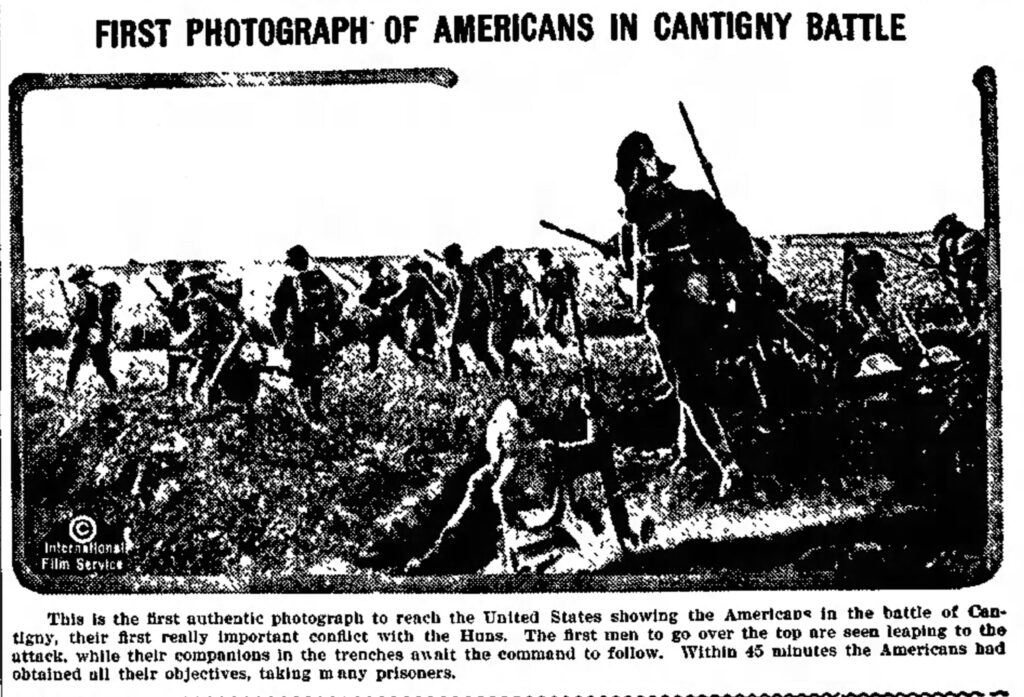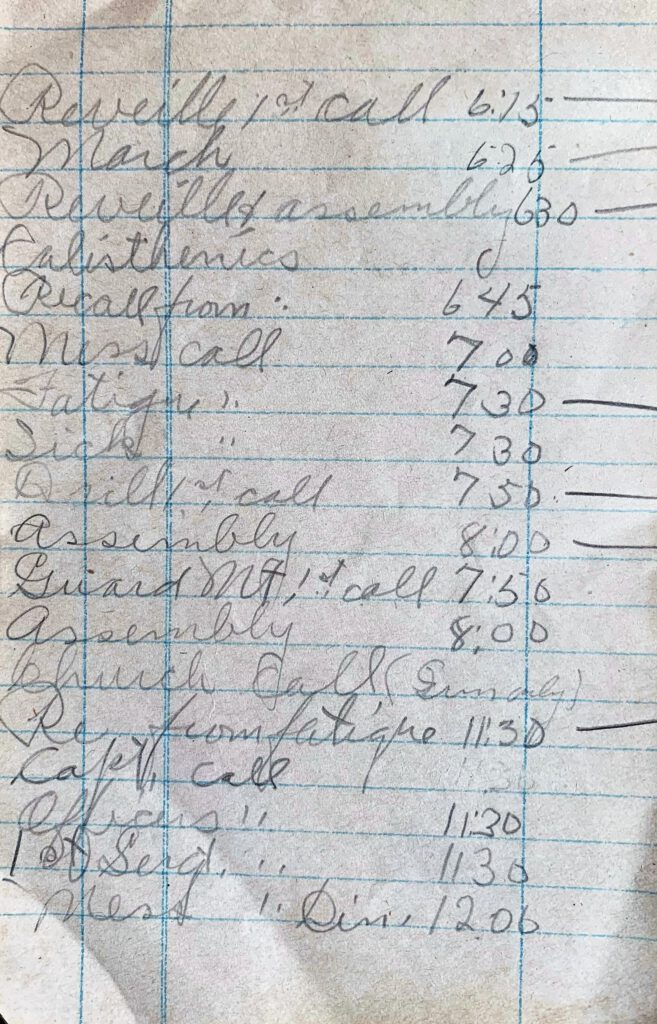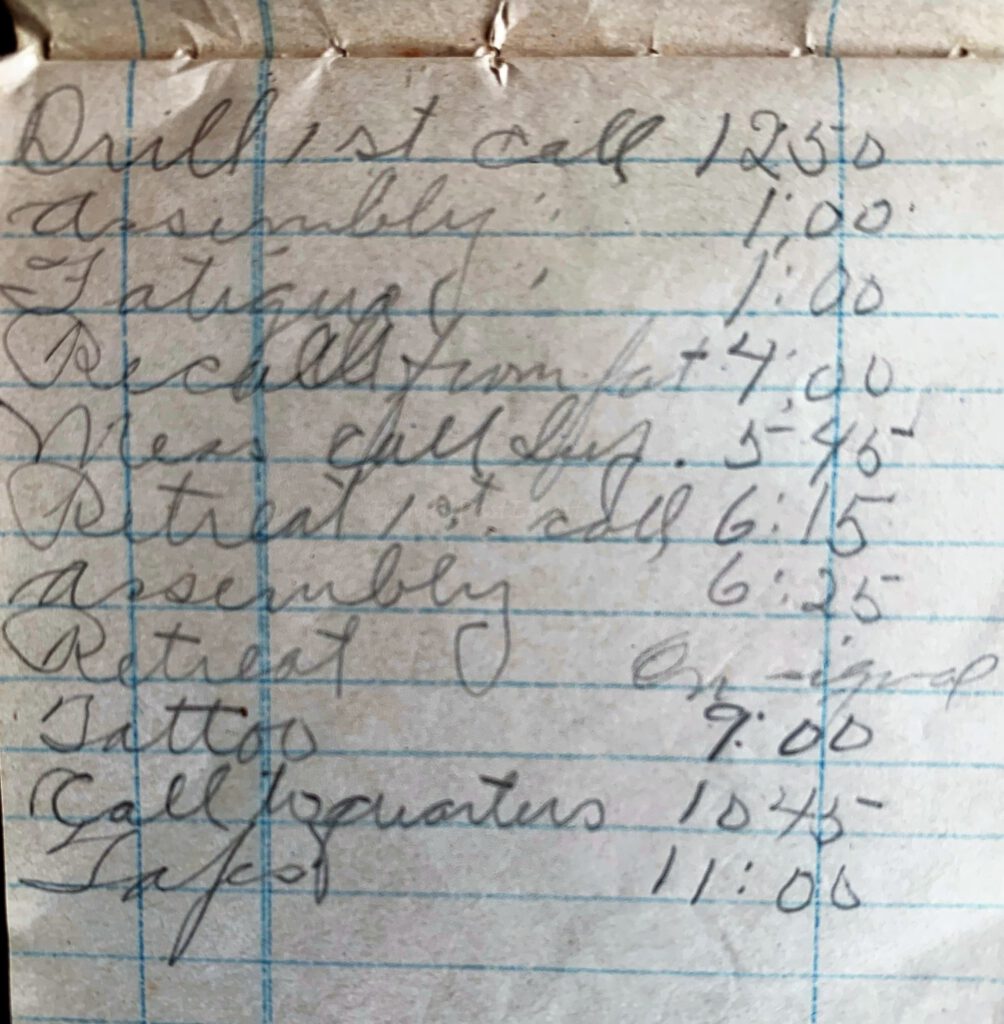Floyd Boyce Phillips was one of millions of boys from the United States who were sent across the Atlantic to the Old Country to fight in the Great War. In this series of posts, we follow the 101st anniversary of Floyd’s journey and get glimpses of what was going on at home while he was over there.
Many thanks to Coralee for providing me with artifacts throughout the years and especially for the stack of WWI-era letters that were delivered to me on 31 May 2019. They have provided countless hours of family history entertainment.
– Denise
This first post in the series finds Floyd still on American soil. Floyd was inducted into the Army on 29 May 1918 at Geneva, Illinois. On 11 June 1918, he was sent to Camp Hancock at Augusta, Georgia, for training. It is probably lucky for us that Floyd was sent to Georgia rather than Kansas. A couple months earlier, the first cases of the Spanish Flu were reported at Camp Funston, (Ft. Riley), Kansas. The disease spread quickly through people in close proximity to those who were sick. Eventually, more than 20 million people died from the flu across the world.

Floyd and the rest of the U.S. and Canada were getting used to a new thing called Daylight Saving Time. It was put into effect via a Congressional Act to help with conservation during war time.
News from across the pond was positive, when Floyd entered service, with the Americans winning the Battle of Cantigny on 28 May 1918 and warding off a counter-attack by the Germans the next day.

But fighting wasn’t over in the Great War. Throughout June, U.S. Marines fought a back and forth battle with the Germans at Belleau Wood and the U.S. Navy placed sea mines in the north sea attempting to sink U-boats. The U.S. War Department also authorized a Chemical Warfare Service to coordinate chemical warfare.
Floyd was still stateside though, likely sweltering in the Georgia heat. Average June temperatures there reach 90 degrees. Back in Illinois he was probably used to highs in the upper 70s. And, he had been spending the summers in Fannystelle, Manitoba, Canada where the highs were probably only in the low 70s.
His daily schedule at Camp Hancock kept him hopping. From reveille at 6:15 AM to taps at 11 PM, the day was filled. There was some marching, some calisthenics, and some drill and assembly time. There was also time for fatigue duty that may have including cleaning up the camp or doing kitchen work. Meals (mess call) were at 7 AM, NOON, and 5:45 PM.


Next…
21 July 1918 A Letter from Mother
Sources:
WWI Interactive Timeline, The National WWI Museum and Memorial ( https://www.theworldwar.org/explore/interactive-wwi-timeline : accessed 3 Jun 2019)
“First Photograph of Americans in Cantigny Battle,” The Daily Herald (Chicago, Illinois), 02 Aug 1918, page 2 ( https://www.newspapers.com/image/37236762/ : accessed 3 Jun 2019).
Floyd Boyce Phillips, “Journal” (Army, 1918-1919).” privately held by Denise Krueger, Rochester, MN, 2019.
The Phillips Family
- Publication date: September 2015
- Pages: 432
- Formats:
- This book traces our Phillips ancestry. It follows the Phillips family from 18th century ancestors in New York to more recent asparagus farmers of Illinois. Five generations of descendants of Wilhelmus Philip are covered. The families of Jacob W Phillips, his son Albert Aveldo Phillips, his son Guy Allison Phillips, and his son Floyd Boyce Phillips are followed in detail.



Leave a Reply